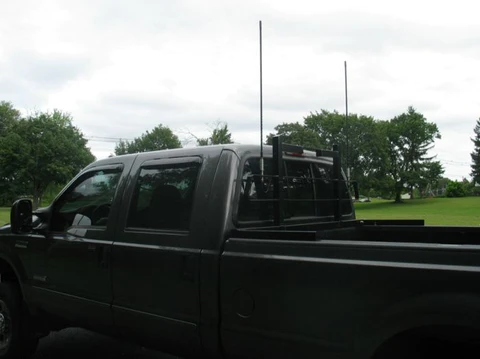How to Ground a CB Antenna On a Semi Truck
Grounding your CB antenna on a semi-truck isn’t just a technical requirement; it’s a critical step to ensure clear communication and safety on the road. Proper grounding minimizes the risk of interference, maximizes the effectiveness of your CB radio, and ensures you’re heard loud and clear, whether you’re coordinating with other truckers or seeking assistance in emergencies.
Why Grounding Matters
A well grounded antenna reduces the risk of radio frequency interference, enhances your radio’s performance, and, most importantly, ensures your safety and that of others on the road.
Check Also: Best bullet antenna
How to Ground a CB Antenna on a Semi Truck Tutorial
What is the Best Way to Ground a CB Antenna?
Step 1:
Identifying the Best Mounting Location
Your semi-truck offers several potential mounting spots for your CB antenna, but not all are created equal when it comes to grounding. Ideally, you want a location that’s:
- Close to the truck’s frame or chassis for a robust electrical connection.
- Free from obstructions that could interfere with signal transmission.
- Easy to access for both installation and future adjustments.
My favourite places are near the mirrors, on the roof for the highest possible elevation, or the back of the cab for protection from the elements and low hanging obstacles.
Step 2:
Preparing the Ground Connection
Once you’ve chosen the perfect spot, it’s time to prepare for grounding:
- Clean the mounting area thoroughly, removing any paint, rust, or debris to ensure a metal-to-metal contact.
- If using a grounding strap, ensure it’s securely attached to the antenna mount and a clean, unpainted part of the vehicle’s frame.
- For those opting for wire, a 10-gauge wire can suffice, but ensure it’s short and runs directly to a grounding point on the frame.
Step 3:
Testing for Continuity
Testing for continuity ensures your antenna is properly grounded:
- Use a multimeter set to the continuity setting.
- Place one probe on the antenna mount and the other on the truck’s frame or a known ground point.
- A beep or a zero reading on the multimeter indicates a successful test, confirming a solid ground connection.
Step 4:
Final Adjustments and Testing
- Recheck all connections to ensure they’re tight and corrosion-free.
- Test your CB radio’s Standing Wave Ratio to ensure it’s within acceptable limits. An SWR meter can help you adjust the antenna for optimal performance.
- Consider running a grounding strap from the cab to the frame, especially if you’ve mounted the antenna on the cab. This step ensures the best possible continuity and reduces RFI.
Will Aluminum Ground a CB Antenna?
Aluminium can serve as a grounding material, but it comes with quirks. It’s less conductive than copper and more susceptible to corrosion, which can affect the quality of your ground over time. If you’re mounting an antenna on an aluminium part of your vehicle, ensure a solid electrical connection by using conductive grease and regularly checking for corrosion.
What Happens if You Don’t Ground a CB Antenna?
Without proper grounding, you’ll experience higher Standing Wave Ratio readings, meaning your antenna is not efficiently transmitting all the power, which leads to reduced range, increased interference, and potentially even damage to your CB radio over time.
